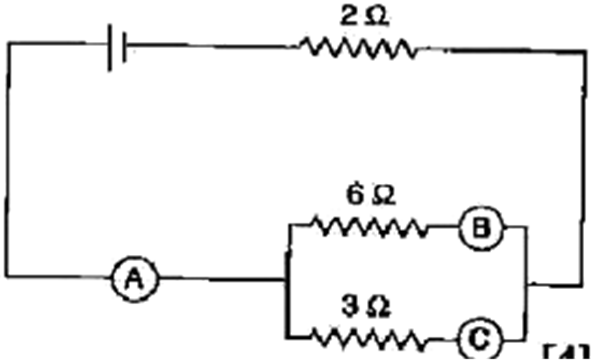 Short Answer Type
Short Answer TypeState the functions of the following in a nuclear reactor:-
i) Moderator ii) Control rods iii) Coolanti) Moderator – It shows down the speed of moving neutrons to allow the nuclear fission of uranium.
ii) Control rods – They absorb the extra neurons which are released during the nuclear fission reaction. They absorb that much neurons so that only one neuron is left to carry out controlled nuclear fission. They are made of boron and cadmium.
iii) Coolant – It absorbs the heat released during nuclear fission reaction. It is used to carry the energy of the fission reaction from the core of the reactor and take it to a place of utilization in steam generator.
i) Mention two important precautions that should be taken while handling radioactive materials.
ii) State any one use of radioisotopes.
 Long Answer Type
Long Answer TypeThe combination of a movable pulley P1 with a fixed pulley P2 is used for lifting up a load W.
i) State the function of the fixed pulley P2.
ii) If the free end of the string moves through a distance C, find the distance by which the load W is raised.
iii) Calculate the force to be applied at C to just raise the load W = 20 kgf, neglecting the weight of the pulley P1and friction.
A solid body weighs 2.10 N in air. Its relative density is 8.4. How much will the body weigh if placed:-
i) in water,
ii) in a liquid of relative density 1.2?i) What is meant by refraction?
ii) Express the refractive index n of a medium,
If there is no heat loss to the surroundings, the heat released by the condensation of m2 g of ice at 0oC into water at 0o C.
i) Find:
1. The heat lost by the steam in terms of m1.
2. the heat gained by ice in terms of m2.
ii) Form a heat equation and find the ratio of m2: m1 from it.
In the figure given alongside, A, B and C are three ammeters. The ammeter B reads 0.5 A. All the ammeters have negligible resistance.
Calculate:
i) The readings in the ammeter A and C.
ii) The total resistance of the circuit.i) Draw a labeled diagram of a hot cathode ray tube.
ii) Why are materials of low work function preferred as thermionic cathode materials?
iii) Write an equation to show the fission of a nucleus of U235 with the production of three neutrons.